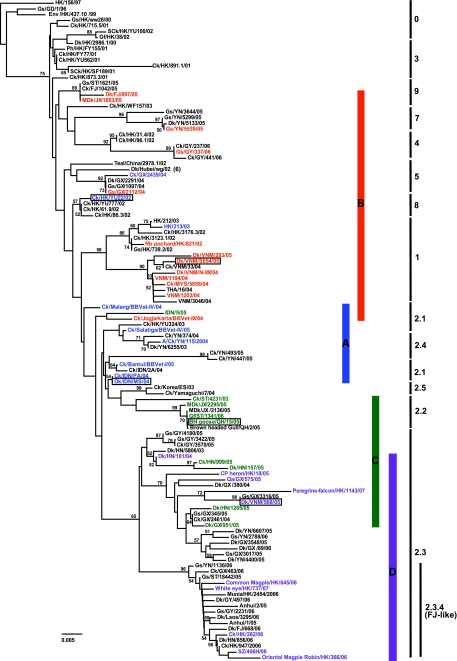FIG. 1.
Phylogenetic tree built with HA amino acid sequences illustrating the phylogenetic clades of viruses used in this study. Clades of H5N1 virus were classified according to recommended nomenclature of the WHO evolution working group, e.g., 2.1 indicates 2003 to 2007 from Indonesia (mixed avian/human). A detailed description of each clade is provided at the WHO website (53). A, B, C, and D represent four antigenic groups of H5N1 viruses characterized in this study with MAbs (Table 1) and are highlighted in blue, orange, green, and purple, respectively. Clade 2.3.4 was specified as it was also called “FJ-like” virus previously (41). Isolates of H5N1 virus used for generating monoclonal antibodies are labeled in a blank box. Abbreviations: Env, environment; FJ, Fujian; GD, Guangdong; Gs, goose; GX, Guangxi; GY, Guiyang; JX, Jiangxi; MDk, migratory duck; MYS, Malaysia; Ph, pheasant; Qa, quail; Rb pochard, rosybilled pochard; SCk, silky chicken; SZ, Shenzhen; THA, Thailand.

